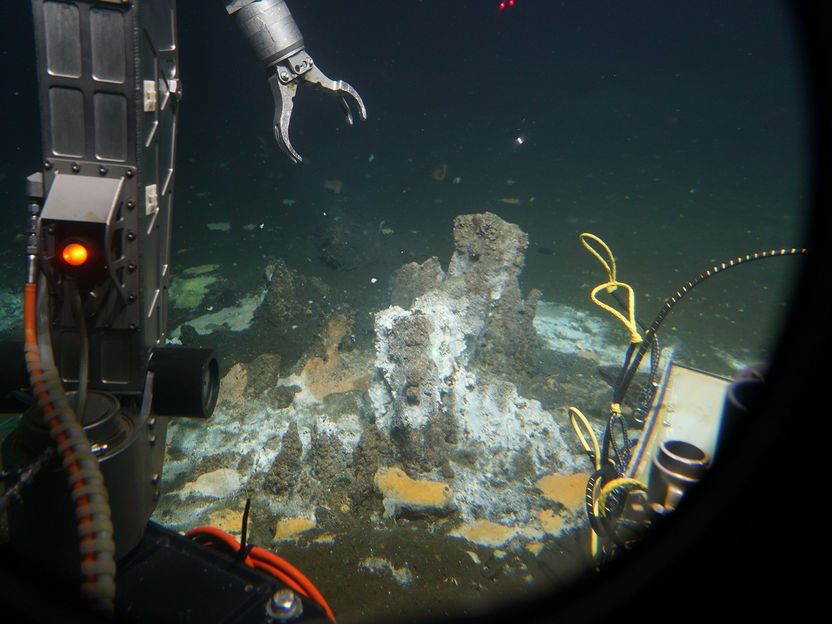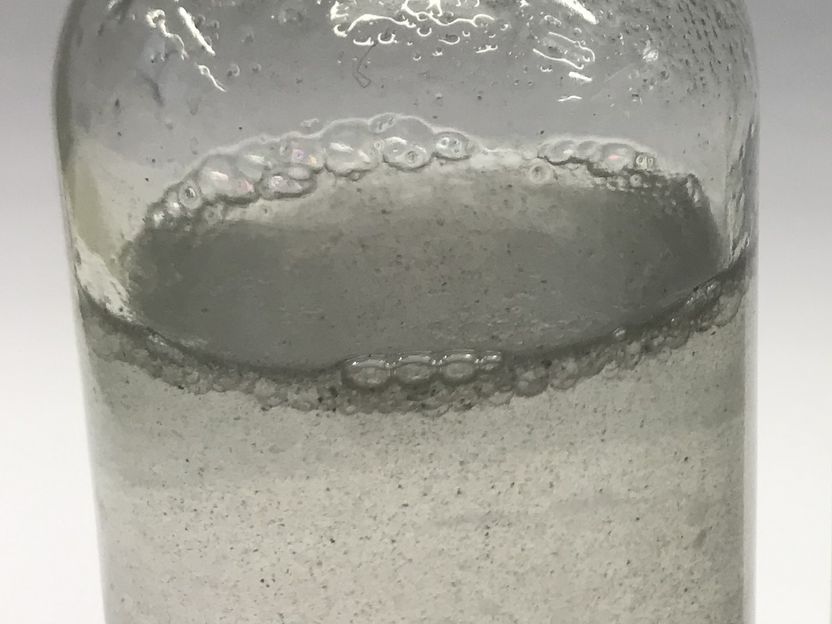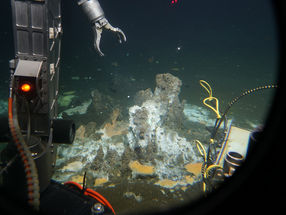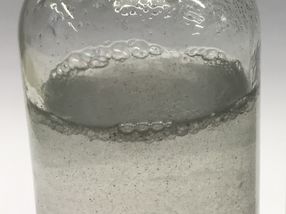Researchers cultivate archaea that break down crude oil in novel ways
How microorganisms deep in the seabed render crude oil harmless
The seafloor is home to around one-third of all the microorganisms on the Earth and is inhabited even at a depth of several kilometers. Only when it becomes too hot does the abundance of microorganisms appear to decline. But how, and from what, do microorganisms in the deep seafloor live? How do their metabolic cycles work and how do the individual members of these buried communities interact? Researchers at MARUM – Center for Marine Environmental Sciences at the University of Bremen and at the Max Planck Institute for Marine Microbiology at Bremen have now been able to demonstrate in laboratory cultures how small, liquid components of crude oil are broken down through a new mechanism by a group of microorganisms called archaea. Their results have now been published in the professional journal Nature Microbiology.

In the spotlight of the U.S. deep-sea submersible ALVIN, a small reddish-brown vent massif can be seen on the seafloor of the Guaymas Basin. This formation is surrounded by abundant hydrothermally heated oil-rich sediments covered by white and orange bacterial mats. The core from which the Candidatus Alkanophaga archaea ultimately originated was collected by the team of the manned deep-sea submersible.
Woods Hole Oceanographic Institution

The microbial community was cultivated in a variety of liquid alkanes, here a hexane culture. An oil layer can be observed on the surface.
Hanna Zehnle


Microbial communities are especially active near hydrothermal seeps like those in the Guaymas Basin in the Gulf of California. The team of researchers has been working on understanding these communities for many years. Organic material deposited in the Guaymas Basin is cooked by heat sources from within the Earth, which breaks it down into crude oil and natural gas. Their components provide the primary source of energy for microorganisms in an otherwise hostile environment. In their latest study, the researchers have demonstrated that archaea use a previously unknown mechanism to degrade liquid petroleum alkanes at high temperatures without the presence of oxygen.
Alkanes are highly stable compounds of carbon and hydrogen. They are natural components of natural gas and crude oil. The latter is refined by humans into fuels like gasoline and kerosene. Environmental catastrophes occur repeatedly due to accidents during the extraction of crude oil. A prime example was the accident on the Deepwater Horizon drilling platform, which caused severe environmental damage in the Gulf of Mexico due to the toxic effects of crude oil compounds like liquid alkanes. In the presence of oxygen, microorganisms can rapidly break down many components of crude oil, among others alkanes. Without the reactive oxygen, however, degradation is considerably more difficult. Organisms that can perform this task have not been extensively researched. In recent years, however, evidence has been found that archaea are able to employ a surprising mechanism to do this. It is based on newly discovered variants of the key enzyme of methanogenesis and anaerobic methane degradation, methyl-coenzyme M reductase (MCR). The genes that encode these enzymes have been found in many environmental samples. However, laboratory cultures of the microbes that could illustrate the function of these enzymes were still lacking. This is where the laboratory study of Hanna Zehnle and her colleagues becomes significant.
The team used sediments from the 2000-meter-deep Guaymas Basin in the Gulf of California. The special geological conditions that exist here include high temperatures, liquid crude-oil components, and an anaerobic environment at shallow sediment depths, all of which are normally only found in deep-lying oil reservoirs which are difficult for scientists to access.
In the Bremen laboratories the researchers prepared cultures with liquid alkanes and allowed them to grow anaerobically, i.e., without oxygen, at high temperatures (70 degrees Celsius). “After a time,” explains first author Hanna Zehnle, “sulfide forms in the cultures. This provides evidence that they are active.” The composition of the cultures is studied using DNA and RNA samples. “With this method we can find out what organisms are living in this system and which metabolic pathways they are using,” says Zehnle. These include the chemical reactions in which substances are metabolized. They found archaea of the genus Candidatus Alkanophaga in the cultures. These archaea use variants of the MCR for breaking down the alkanes. The researchers verified this by transcriptome data, measurement of the enzyme products, and by demonstrating inactivity of the cultures when the enzyme was inhibited. But the organisms are not able to degrade the crude oil alone. Respiration, in the form of sulfate reduction in this case (because no oxygen is present), is carried out by bacteria of the genus Thermodesulfobacterium, which form dense consortia with the archaea.
Methanogenesis is one of the oldest known metabolic processes and is a part of the global carbon cycle. The laboratory study by Hanna Zehnle and her colleagues shows that the enzymes involved in this process can also utilize liquid (and thus toxic) hydrocarbons which highlights the relevance of this pathway for the global carbon cycle.
“Thanks to their newly discovered capabilities, Alkanophaga and their relatives are targeting hydrocarbons in oil reservoirs. The remaining oil becomes more and more solid and therefore tends to remain in the seafloor,” explains corresponding author Gunter Wegener. “We still have not been able to investigate any deep oil reservoirs, but the archaea are certainly annoying the oil industry with their activity. But they also make an important contribution to the fact that natural oil seeps are rare.”





















































